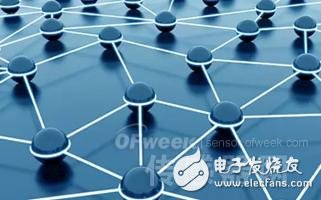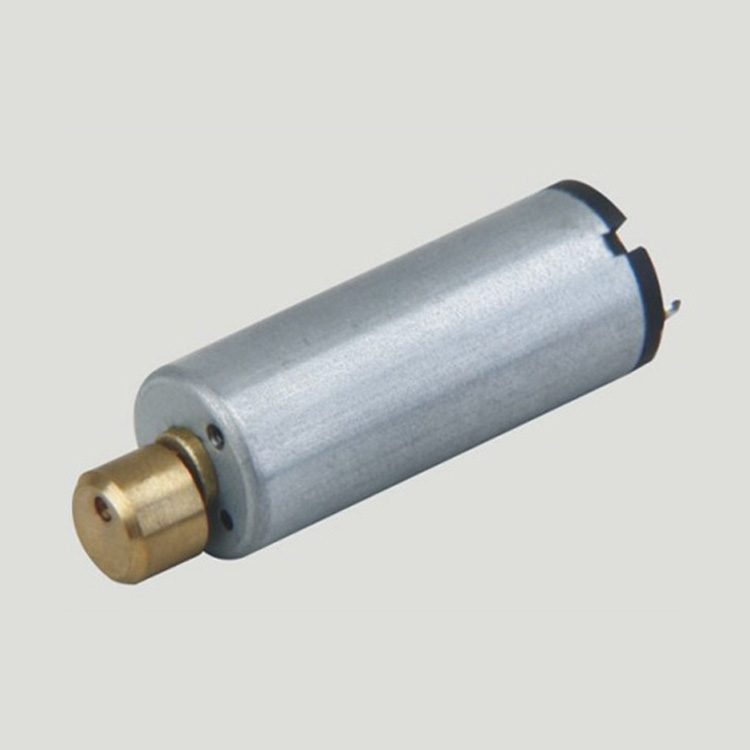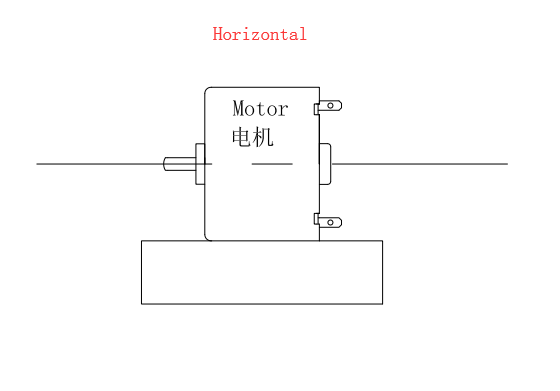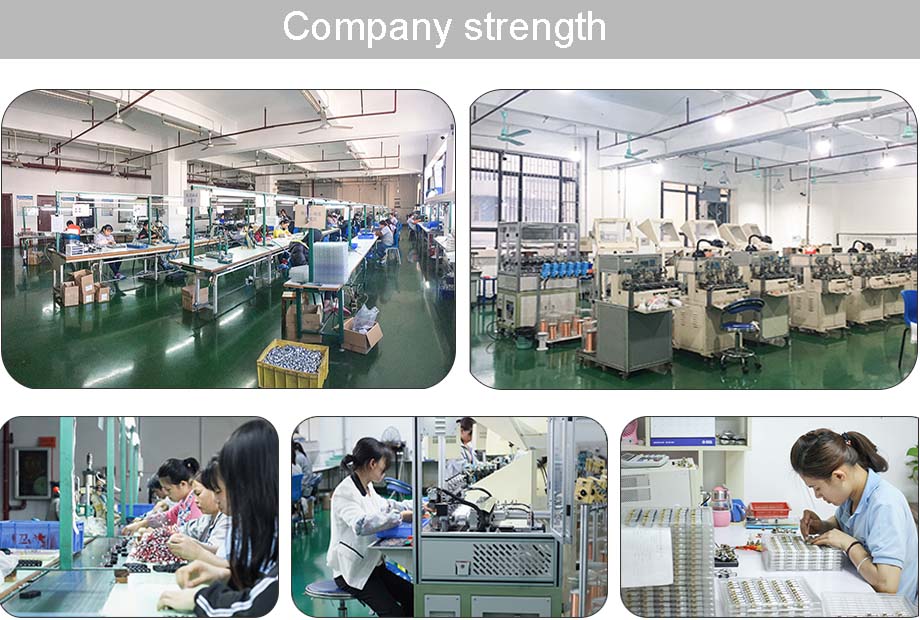The Internet of Things (IoT) describes a world in which more and more devices are driven by sensors, devices are connected to each other, and can share information about their current state and the environment in which they operate. Now, the world has arrived. Traditional energy fuels are unsustainable and harmful to the planet. At the same time, there are currently 1.3 billion people in the world who do not have access to electricity. All of this exacerbates the energy dilemma. But there are two transformational developments that can address the challenges of energy efficiency: one is the convergence of operational technology (OT) and information technology (IT), while the Internet of Things can accelerate this process; the other is smart grid technology. The emergence of smart grid technology can promote the development of a new energy world that is more "3D+E", digital, low-carbon, decentralized and electrified. In a recent Schneider Electric Global IoT Survey of more than 2,500 corporate decision makers around the world, more than 70% of respondents said they believe the Internet of Things will be in the near future: åˆ›é€ Create new business opportunities for the company ̇ Improve the efficiency of your business and other businesses ̇ Generate long-term business benefits ̇ Become a key interface between the company and its customers Moreover, nearly half of the respondents are concerned that if they do not use IoT technology in their business operations, their business will be negatively affected and lose their competitive advantage. This is quite interesting. To help them identify opportunities for development and to explore the Internet of Things, Schneider Electric will outline in this report: Prospects for the Internet of Things ̇ IoT Getting Started Guide ̇ Realize the four pillars of business opportunities é‡è¦ The important role of partnerships and platforms 1. The next round of digital transformation: The Internet of Things will trigger the next round of digital transformation of enterprises. It is the integration of operational technology (OT) and information technology (IT), which will help the development of labor mobility and digitalization: with more and more The company will expand and deepen the digital transformation throughout the business scope, and the role of the Internet of Things, especially the industrial Internet of Things, will become more and more important. More affordable "interconnected" sensors, embedded intelligence and control, faster and more ubiquitous communication networks, cloud acceleration and edge computing, and advanced data analysis capabilities will all contribute to this wave of digital transformation. The survey results show that two-thirds of companies plan to implement IoT technology through mobile applications in 2016. 2. Market Insight Data: The Internet of Things will transform previously undeveloped data into market insights, helping companies take customer experience to a new level: when thinking about the value proposition of the Internet of Things, most companies consider it to be the main The advantage is to increase efficiency and save costs. However, enabling data access—including data that has not been previously developed—and turning it into actionable market insights (which is what the Internet of Things is all about) will help companies achieve higher levels of customer service. Transformation provides new opportunities for companies to increase brand/service loyalty and satisfaction. 63% of respondents plan to use the Internet of Things in 2016 to better analyze customer behavior and improve service levels. 3. Local-to-cloud confidence: The Internet of Things will drive an open, interoperable hybrid computing approach that fosters industry and government collaboration on global architecture standards to help address cybersecurity issues: while cloud-based Networking solutions will become increasingly popular, but no single computing architecture can monopolize their messaging. Conversely, as part of a private cloud or public cloud offering, the Internet of Things will thrive across systems, both on the edge and indoors. Forty-one percent of respondents believe that cybersecurity threats related to the Internet of Things will become a key challenge for their business, which is a reflection of current users' security concerns. Making the Internet of Things available across heterogeneous computing environments can help end-users use IoT solutions in ways that best suit their security needs and mission-critical needs, while enabling organizations that are still using traditional technology infrastructures to be reasonable. Moving forward on a controlled path allows them to transition smoothly over time. 4. Crossing infrastructure barriers and achieving innovation: The Internet of Things will stimulate innovation, break business models, and promote economic growth in enterprises, governments, and emerging economies: just as the industrial revolution, the birth of the Internet, and the mobile revolution have promoted social progress, Innovation and prosperity, the Internet of Things will do the same. Enterprises and cities will provide new services to support the Internet of Things. New business models will emerge. In particular, emerging economies will face great opportunities to quickly use the Internet of Things without the constraints of traditional infrastructure. Leaping Development. In fact, McKinsey predicts that 40% of the global IoT solution market will come from developing countries. 5. A Better Planet: IoT solutions will be used to address major social and environmental issues: The Internet of Things will help countries and their economies meet the biggest challenges facing the planet, including global warming, water scarcity and the environment. Pollution. In fact, respondents believe that improving resource utilization is the greatest benefit of the Internet of Things for the entire society. With the private sector. In response, the local government and the national level also support the Internet of Things, with the aim of using relevant technologies to accelerate and optimize existing measures to curb greenhouse gas emissions and achieve national commitments in the breakthrough climate agreement of COP21 (Paris Climate Summit). (In this agreement, 195 countries around the world promised to keep the global temperature rise to within 2 degrees Celsius by 2100). The understanding of the future of the Internet of Things is of course important, but at the same time, the Schneider Electric Global IoT Survey found that companies are struggling to know how to open the Internet of Things and how to prove its value. On the other hand, companies cannot afford to abandon or replace existing IT/OT facilities directly. But the reality is that the impact of the Internet of Things—especially in industry—will be a “gradual revolution.†An incremental change that complements traditional investments while facilitating a major transformation of business processes and performance. From the experience of Schneider Electric, it is best for companies to start small, focus on the key, and achieve rapid return on investment through pilot projects to prove the benefits of the Internet of Things, and then expand the scope of implementation. Applying the Internet of Things in such a way will get the best results. Maximizing energy efficiency and optimizing the performance and reliability of assets can be used as a testing ground for enterprise applications. If you use an IP network to connect various assets and monitor their operation through sensors, the cost is usually prohibitively high. However, new technologies that have emerged over the past few years have changed the cost equation for this technology. With the advent of system-on-chip technology, assets can be easily connected to the network; sensor costs are reduced, and companies can quickly monitor all assets, rather than just monitoring a small portion of them as before. The full coverage of assets by the Internet of Things means that every component of the production process or supply chain (such as a drive) and each system (such as a machine) can pass information: whether they run within the standard range and when they need to Proactive maintenance, how much is used, and so on. This kind of information transfer is an important development for OT and IT convergence, which can maximize the productivity, efficiency and profitability of the enterprise. The principles that apply to industrial and manufacturing environments apply equally to cities and buildings. Nowadays, installing sensors in a conference room can measure room usage and send information to the building management system, which automatically turns off lighting and heating/cooling equipment to save energy. Its role can be further expanded. By connecting the sensor to the online weather information, you can control the environment for the next day's work. If its applications are more global, the Internet of Things can help energy managers manage building portfolios by accessing real-time and historical data to achieve the highest rate of return on energy efficiency investments. In 2016, the Internet of Things is creating tremendous value in four areas: through continuous innovation, there will be potential to generate greater value in the future: · Maximize energy efficiency and sustainability through intelligent systems and real-time data-based decision making Optimize asset availability and performance through predictive analytics and proactive maintenance · Smarter, more efficient, and more profitable operations by reducing energy waste and downtime to address time costs · Mobile exploration and potential risk prediction through simulation, situational awareness and digitization Next, analyze the above four key areas, including the tangible benefits that customers receive through the successful use of the Internet of Things. 1. Energy efficiency maximization and sustainability Whether it's professionals in energy and sustainability, or leaders in IT and operations management, regardless of the size of their management – ​​single-family buildings, complex buildings, factory floors, a global supply chain or even the entire city, now Faced with the severe challenges of maximizing efficiency. For successful response, multiple forms of data from multiple application scenarios and resources must be connected, including energy usage, utility costs, water consumption, building occupancy, and more. These past work is usually done through spreadsheet software. Today, people have the ability to collect accurate data from systems around the world, even small to a computer on a production line, and transform it into operational-specific intelligence through IoT and data analytics to achieve sustainable application solutions. To solve strategic business problems, improve profitability and company performance. This IoT-based approach is fully reflected in the operations of the Sustainable Apparel Coalition (SAC), which represents more than one-third of the global apparel and footwear market. SAC needs to shift its heavy reliance on complex electronic tabulation software, the proprietary self-assessment tool Higg Index, to more convenient users to use the online platform to measure and evaluate the sustainability of society and the environment. With the Internet of Things, the new Higg Index Platform enables SAC members to easily track and measure sustainability key indicators upstream and downstream of the supply chain, including energy consumption, greenhouse gas emissions, water use, chemical policies, waste management and factories around the world. Labor practice, etc. Today, does SAC make this platform a LinkedIn for the apparel supply chain? On this platform, brands, manufacturers and distributors can connect, share data and be able to publish their sustainability performance. 2, to achieve asset availability and performance optimization The Internet of Things can also create value in terms of asset availability and performance. Through predictive analytics, critical equipment can be continuously operated, avoiding the high cost cost of downtime; it can also improve operational efficiency, such as using less power to operate within the performance range, thereby extending product life. A large US power company introduced IoT software, using conditional monitoring and predictive analytics to improve asset performance and achieved great success. The company installed sensors on key equipment throughout the process, successfully translating data (such as temperature change patterns) into operational information, preventing critical business process downtime, and saving millions of dollars. After entering the data from the sensor into the predictive analysis application, it was found that the exhaust gas temperature of a gas turbine was 50 °F higher than the historical record. Technicians used this information to visually inspect the failed burner, but did not find the source of the problem. Based on the trust in the software results, the technicians implemented a maintenance plan for the machine. During the planned outage, the technicians are deeply inspected to lock and resolve the damaged location. It was eventually found that the combustion chamber, transition duct, fixed vanes and rotating blades required maintenance. The predictive model enabled by the Internet of Things saved the company a previously estimated cost of more than $450,000. The IoT feature helped them discover more temperature and vibration problems, and saved more than $5 million through proactive maintenance. 3, intelligent, efficient, profitable operation The Internet of Things gives every asset on the production line, manufacturing process, building or grid a “speaking opportunity†that breaks the long-term barrier between the OT and the IT world and opens up a business model that is far superior to the existing one. OT's environmental conditions and performance can be “interrupted†to provide accurate operational data, so that any machine, anyone, and information system at any level can participate in improving the overall process. The New Belgium Brewing Company applied this thinking and received a good return. As the market demand grows, the company needs to increase production capacity, but increasing production lines requires more money, so they are eager to find a way to increase the output of existing facilities. The New Belgium Brewing Company is equipped with manufacturing software using IoT technology that provides real-time analysis of asset and capacity utilization and overall plant efficiency of the production line facility. By detecting and measuring equipment performance and energy consumption, relevant information can be sent to operators and decision makers in real time, taking quick action, implementing equipment maintenance, improving equipment status, maintaining productivity, and reducing unplanned downtime. In the end, the new Belgian brewing company's unplanned downtime was reduced by 50%, while capacity doubled, and the growing market demand was met without adding new production lines. 4. Mobile end exploration and potential risk prediction As the example above, the Internet of Things is helping companies discover new value and gain more revenue from existing systems; bringing “things†to the forefront of corporate strategy without having to “discard and replaceâ€. There is another area where you can leverage the value of IoT solutions: mobile exploration and potential risk prediction. One of the hardest jobs in the factory is troubleshooting and repairing machine failures. Factory equipment is usually a mix of old and new models, from brand new to older models that have been in service for more than 20 years. In addition, not every product has a human-machine interface, and many products have no on-site recording, which poses a huge challenge in fault identification and determination. By embedding sensors throughout the plant on the machine and loading data from inventory, geography and shape recognition into the AugmentedReality mobile app, the operator can leave the control room and learn more without having to go back and forth. By simply operating the tablet, real-time data is available in the factory environment, in front of the machine, and even outside the building, informing the operator of the issues that need attention and potential failures that require repair. Give another example of "contextualization information." Public engineers in Carson, Nevada, are currently engaged in maintenance and repair of urban water supply, sewage treatment, transportation operations, landfills, vehicle transportation, and renewable energy power generation systems. They are equipped with tablet PCs and smartphones with professional software that enable them to get real-time, centralized information on device status and job scheduling. Managers and workers believe that their mobility, situational awareness, responsiveness, and productivity have improved as a result of initial investments in digitization and the Internet of Things. The development, implementation, monitoring, service, and continuous innovation of IoT solutions cannot be done independently or on their own. IoT technology involves a number of technologies, including hardware, software, machines, and networks, as well as assistance from organizations at all levels. Internet of Things technology is rapidly developing. In order to build, deploy, manage, and introduce new IoT solutions, partnerships between industry leaders, technology innovators, academic institutions, and governments and standards bodies are critical. important. Strategic partnerships are rapidly evolving, covering a wide range of areas related to the Internet of Things, enabling technology innovation experts in the areas of interoperability, cloud computing, big data, network security, industrial automation, engineering and integration to work together and Achieve technical communication and even consult with top industry leaders and academic institutions. These partners are working together to solve the problems of key customer segments, accelerate the development of new IoT solutions, and deliver them in a more influential way to create value. Finally, the IoT platform, especially the cloud platform, is the key foundation for developing and delivering IoT solutions. It creates a new industry environment that makes it easier and more cost effective to develop new applications and services, tap and support a broader development community, adopt industry standards and thinking, and innovate. The three major trends have triggered a sharp increase in energy demand, which in turn triggered the Internet of Things revolution: Urbanization: By 2050, the global urban population will increase by 2.5 billion. · Digitization: 50 billion new devices and “objects†will be connected to the Internet in five years. · Industrialization: Industrial energy consumption will increase by at least 50% in the next 35 years. Traditional energy fuels are unsustainable and harmful to the planet. At the same time, there are currently 1.3 billion people in the world who do not have access to electricity. All of this exacerbates the energy dilemma. But there are two transformational developments that can address the challenges of energy efficiency: one is the convergence of operational technology (OT) and information technology (IT), while the Internet of Things can accelerate this process; the other is smart grid technology. The emergence of smart grid technology can promote the development of a new energy world that is more "3D+E", digital, low-carbon, decentralized and electrified. Relying on the innovation power and unlimited possibilities of the Internet of Things, Schneider Electric provides interoperable products, edge control, applications, analysis and services to achieve multi-level innovation from the equipment layer to the operational layer to the management layer, thus helping families, buildings, Customers in the data center, industrial and power industries optimize energy efficiency and process control. Interoperable products: Intelligent technology integration on all devices to achieve digital transmission of data. Edge Control: Enables hardware and software to implement real-time automation and control decisions at the local and operational levels. Applications, Analytics, and Services: Enterprise-level software, applications, and analytics transform consolidated/aggregated data from lower levels into data-driven operational information. Innovation is never out of date at any level; it redefines energy management and automation for customer outcomes, while innovation also addresses energy dilemmas for the sustainable development of the planet. The application of the Internet of Things in the enterprise is still at an early stage, but it has begun to create value and has a specific impact, especially in the four parts discussed above. The following is a summary of these initial success stories: 1. The company has not allocated a large amount of budget for the Internet of Things. Instead, they are trying to experiment with the IoT solution in an effective way, that is, to get more out of the company's existing OT and IT investments and processes. 2. Enterprises that have adopted IoT solutions have found that asset and energy management are two good IoT test sites that can quickly generate value at relatively low cost. 3. The Internet of Things is filling the gap between OT and IT. This means businesses can access rich new data sets. These data will slowly give companies better market insights and better performance. This integration will also facilitate collaboration with companies in the OT and IT sectors. The use of IoT solutions to generate value for the functional area must also take into account the overall benefits. For example, for an industrial manufacturer, if the energy consumption is reduced by 10% at the expense of production time, safety and risk reduction, it is not a benefit. Obviously, as time goes by, the Internet of Things will definitely be used to connect the entire enterprise in order to make informed decisions. Companies should take advantage of the Internet of Things to put assets, business, processes, people, energy, mobility and situational awareness into the context of one or the entire system. Companies should also recognize the impact of each part on each other, which will help ensure that the overall is greater than the sum of the parts, thus achieving exponential operating gains. Companies are now facing a number of decisions that will affect their ability to benefit from the Internet of Things in the future, including the development of new applications and the services generated by these applications. To achieve these positive results, companies need to coordinate carefully to combine technology, partnerships, people, winning methods and innovation.
The micro Vibration Motor is introduced:
Micro vibration motor is mainly used for adult health care products and toys, micro vibration motor is a Dc Motor, the motor shaft with an eccentric wheel, the use of most of the micro vibration motor voltage is lower than 6 v, probably between 6 mm to 15 mm in diameter, when the motor rotation, eccentric circle particles is not the core of the motor, the motor often lose their balance, due to the inertia effect.
Characteristics: small volume, strong vibration;
Operating temperature range:
Mini Vibration Motor should be used at a temperature of -10~60℃.
The figures stated in the catalog specifications are based on use at ordinary room temperature catalog specifications re based on use at ordinary room temperature (approximately20~25℃.
If a Mini Vibration Motor is used outside the prescribed temperature range,the grease on the gearhead area will become unable to function normally and the motor will become unable to start.Depending on the temperature conditions ,it may be possible to deal with them by changing the grease of the motor's parts.Please feel free to consult with us about this.
Storage temperature range:
Mini Vibration Motor should be stored ta a temperature of -15~65℃.
In case of storage outside this range,the grease on the gearhead area will become unable to function normally and the motor will become unable to start.
Service life:
â—Use with a load that exceeds the rated torque
â—Frequent starting
â—Momentary reversals of turning direction
â—Impact loads
â—Long-term continuous operation
â—Forced turning using the output shaft
â—Use in which the permitted overhang load or the permitted thrust load is exceeded
â—A pulse drive ,e.g.,a short break,counter electromotive force,PWM control
â—Use of a voltage that is nonstandard as regards the rated voltage
â—Use outside the prescribed temperature or relative-humidity range,or in a special environment.
â—Please consult with us about these or any other conditions of use that may apply,so that we can be sure that you select the most appropriate model.
when it come to volume production,we're a major player as well .each month,we rurn out 600000 units,all of which are compliant with the rohs directive.Have any questions or special needed, please contact us, we have the engineer group and best sales department to service to you Looking forward to your inquiry. Welcome to our factory.
Micro Vibration Motor,Mini Vibration Motor,Dc Micro Vibration Motor,Electric Micro Vibration Motor Shenzhen Shunchang Motor Co., LTD. , https://www.scgearmotor.com
Features: small size, fast speed, stable performance, low price, can use battery drive,Can change the different materials of the pendulum head


Method of use: the best stable in horizontal plane, installed on the dc Micro vibration motor output shaft parts, cannot use a hammer to knock, knock prone to press into the Micro vibration motor drive, may cause damage to internal components, and cannot be used in the case of blocked.

